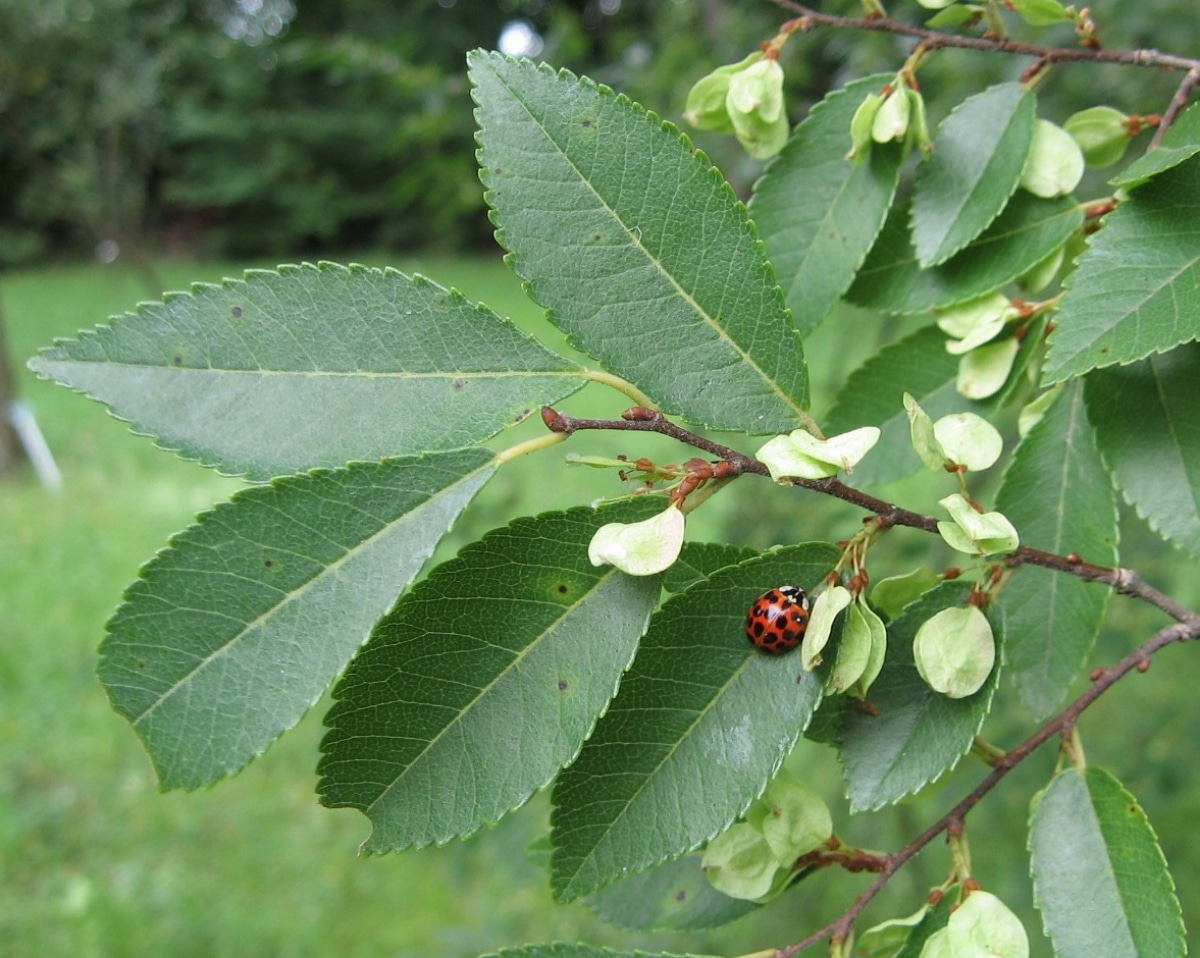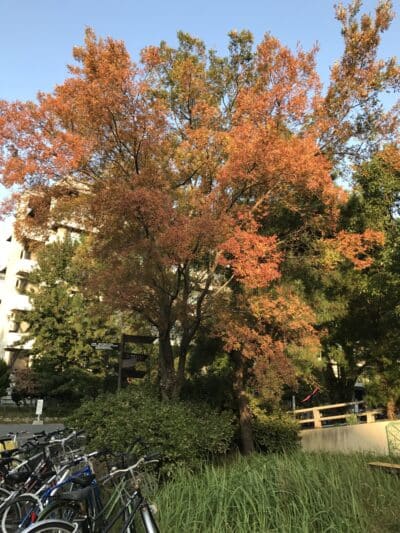
Image – Wikimedia/Ronnie Nijboer
The Chinese elm is a semi-deciduous tree that grows at a relatively fast rate., and that also manages to project an important shadow. For this reason, it is an interesting plant to plant in a large plot, although it could also be in a smaller one if it is pruned regularly, since if it is not done, it will probably end up taking light from the other plants that are growing nearby.
So, if for example you are wondering if you can grow it in a pot from my own experience, I will say yes, but just keep in mind that you must control its growth. Still, if you have a chance, the best thing will be that you plant it in the ground since that is where it can become a big and beautiful tree.
Where is he from?

The Chinese elm, as its name indicates, It is native to China, but it is also native to Japan, both Korea (North and South), and Vietnam. Its habitat is the temperate forests of these countries, although it can also grow somewhat isolated, at an altitude of between 0 and 400 meters above sea level.
Consequently, It supports both extremely hot summers, with temperatures of 30-40ºC, and winters with significant snowfalls.. In fact, as long as the thermometer drops below 0 degrees at some point and does not exceed 40ºC, it will be able to grow without much problem.
What uses does it have?
It is a tree that used as a garden plant, as it provides a lot of shade and, in addition, it becomes beautiful in autumn. However, it is also one of the most worked as bonsai, since it tolerates pruning very well.
How is the Chinese elm?
Our protagonist It is a semi-deciduous tree (that is, it does not lose all its leaves) whose height is 20 meters. The trunk tends to widen to about a meter in diameter at its base, and its bark is grayish in color. The crown is wide, made up of simple, ovate-shaped leaves, and they turn red as soon as the temperatures drop in autumn or winter.
Its flowers are small, reason for which they often go unnoticed, and hermaphrodites. In addition, they are green or white in color. They sprout towards the end of summer, and fructify soon after, producing flattened, brownish samaras.
His scientific name is Ulmus parvifolia; however, it is still often known by Zelkova parvifolia, despite the fact that it is known that he is not a Zelkova.
How do you care for Chinese elm?

Image - Wikimedia / Bidgee
It is a tree that you need to be in a big place, since otherwise it will not be able to grow as we would like. Likewise, the climate must be temperate, since if it is tropical, since there are no frosts it would always have leaves, something that would end up taking its toll because, as I said before, it is a semi-deciduous tree. It needs to lose part of its foliage at some time of the year in order to go into rest and have energy to resume its growth in spring.
In addition, we will have to provide you with this care, if necessary:
Location
El Ulmus parvifolia is a tree that it will always be outside, and exposed to direct sunlight. I also recommend planting it in the ground if you have the chance, about thirty feet away from paved floors, pipes, and other things it could break.
Not picky when it comes to soil, since it grows well even in poor soils. However, if it is very compact and/or very heavy, it is advisable to make a 1 x 1 meter planting hole, and thus be able to fill it with universal substrate.
Another option would be to have it in a pot, but in this case think that you will have to transplant it with some frequency -every time the roots come out through the holes in it-, and prune it.
Irrigation
Irrigation will be done in case it does not rain. It will be especially important if it is grown in a pot, since in these conditions the soil remains moist for less time. As usual, it will have to be rehydrated when we see that the earth is dry, or almost dry. We do not have to wait for it to start to crack, because doing so will make it more difficult for it to absorb water again.
If we are going to have the elm in a pot, what we will do is pour water on it until it comes out through the drainage holes. In the event that the substrate does not absorb it, what we would do is submerge the pot in a basin with water and leave it there for about 30 minutes or so. In this way, the plant will be able to quench its thirst normally.
Multiplication
El Ulmus parvifolia multiplies by seeds, as well as by cuttings in spring. The former can be sown in pots with a universal substrate such as this for example, and they will germinate after a few days (usually a week or two).
The cuttings are taken from healthy branches, and they must be at least 30 centimeters long. Then, the base is impregnated with rooting hormones (for sale here), are planted in pots with vermiculite (for sale here) or peat, and they are watered from time to time so that they do not dry out. If all goes well, in about 15 days they will begin to emit roots.
Pruning
elm pruning takes place at the end of winter. When the time comes, the dry and broken branches are removed, and the opportunity is taken to trim those that are necessary so that the tree has a more or less rounded crown.
Plagues and diseases

Image – Wikimedia/そらみみ
Although it is quite resistant, these insects can affect it: spider mites, borers, aphids, whiteflies and mealybugs. And as for diseases, rust and grafiosis are the ones that can affect it the most.
Rusticity
Withstands temperatures down to -18ºC, as well as the maximum up to 35-40ºC if you have water at your disposal.
What is your opinion of the Chinese elm?